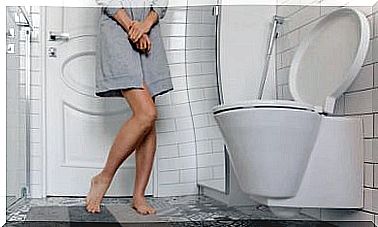Sleep Patterns Predict Degenerative Diseases
A study of our sleep patterns, especially in the REM phase, could tell us if we are predisposed to suffer from certain degenerative diseases, since some are early indicative
Changes or sleep patterns predict degenerative diseases, especially in the rapid eye movement (REM) phase. In this article we tell you what are the signals that, according to different investigations, our way of sleeping sends us.
What are alterations in sleep patterns?
Sleep disorders are all problems related to sleep and do not only affect people with neurodegenerative diseases such as Parkinson’s, dementia or Alzheimer’s.
In all cases they modify the normal development of the cycle formed by sleep and wakefulness and in some people they interfere with the mental, emotional or physical functioning of the individual. The main sleep disorders are:
- Sleep apnea (pausing in breathing)
- Enuresis (wetting the bed, especially children)
- Insomnia (not restful, insufficient, or restless sleep)
- Restless legs syndrome (limbs continually move at night)
- Sleep paralysis (waking up in REM phase, when the brain is active but not the body except the eyes)
- Night terrors (abrupt and terrified awakening)
- Sleepwalking (walking or doing other activity while asleep)
- Narcolepsy (falling asleep anytime or anywhere, unintentionally)
There are also other less recurrent sleep disorders, such as:
- Idiopathic hypersomnia (alteration of the normal course of rest and the need to sleep an additional 4 hours during the day)
- Recurrent hypersomnia (sleep episodes of up to 20 hours for days)
- Idiopathic insomnia (a neurological disorder of the wake / sleep cycle that has trouble waking up or regulating sleep)
REM phase and neurodegenerative diseases

According to a study by the Neurology Service of the Hospital Clínic de Barcelona, the behaviors we have in our REM sleep phase can explain or warn about certain diseases, such as Parkinson’s disease or senile dementia.
Those patients who suffer nightmares about being attacked or chased and express themselves with hitting, kicking, screaming and crying when they go through the REM phase may suffer certain neurodegenerative diseases in the future due to the lack of dopamine in the brain.
Through certain diagnostic tests, people can attend this clinic and analyze the type of disorder that affects them and what it could mean for their future.
These analyzes are carried out on an outpatient basis and in the hospital itself and are in charge of comparing behaviors during the REM phase with the possibility of suffering from some diseases.
Sleep disorders can be a signal to avoid narcolepsy, strokes, or even degenerative diseases or drowsiness. Respiratory problems such as apnea and snoring can also be detected.
Sleep patterns and neurological diseases

In addition to offering patients a Sleep Respiratory Disorders unit belonging to the Pneumology Service, at the General University Hospital of Ciudad Real Sleep Medicine seminar is held where, for example, the relationship between epilepsy with sleep disorders.
According to the neurologist María Gudín, it is difficult to differentiate an epileptic episode from a sleep problem. His colleague Mercedes Muñoz indicated that Parkinson’s disease (the second most common among neurodegenerative) is more common in people who suffer from insomnia, as well as anxiety and depression.
- Hypersomnia appears in 80% of Parkinson’s patients.
- Sleep behavior disorders in the REM phase, by 40%.
- Restless leg syndrome, by 20%.
This means that various sleep patterns are common in neurodegenerative diseases and this affects people’s quality of life. These habits can be an initial manifestation of the disease and therefore it is important to address them from a therapeutic point of view.
For her part, Dr. Estefanía Segura compared the main sleep disorders with the appearance of mental illnesses: schizophrenia, depression, seasonal anxiety or bipolarity. All of them are related to sleep problems. The same is true of generalized anxiety and post-traumatic stress.
Sleep disturbances and Alzheimer’s
An article published on the Bagó Laboratories portal, written by doctors M. Vitiello and S. Borson, affirms that the increase in life expectancy is associated with a greater number of people with dementia in general and Alzheimer’s disease in particular.
Aging, Alzheimer’s and sleep patterns are more than associated. These primary disorders, together with a genetic predisposition and external factors, can compromise people’s quality of life.
In many patients, the interruption of sleep is decisive for their admission. In these cases, the changes in sleeping behavior are greater than in people who do not have the disease. The characteristics of sleep in individuals with Alzheimer’s are:
- Increased waking movements
- Reduction in slow wave sleep and rapid eye movements
- Drowsiness during the day
Damage to the neurons that keep us asleep is the cause of this acceleration in sleep pathology. The hypothalamus and the internal clock are responsible for us to sleep and wake up, but in these people both are not synchronized.








